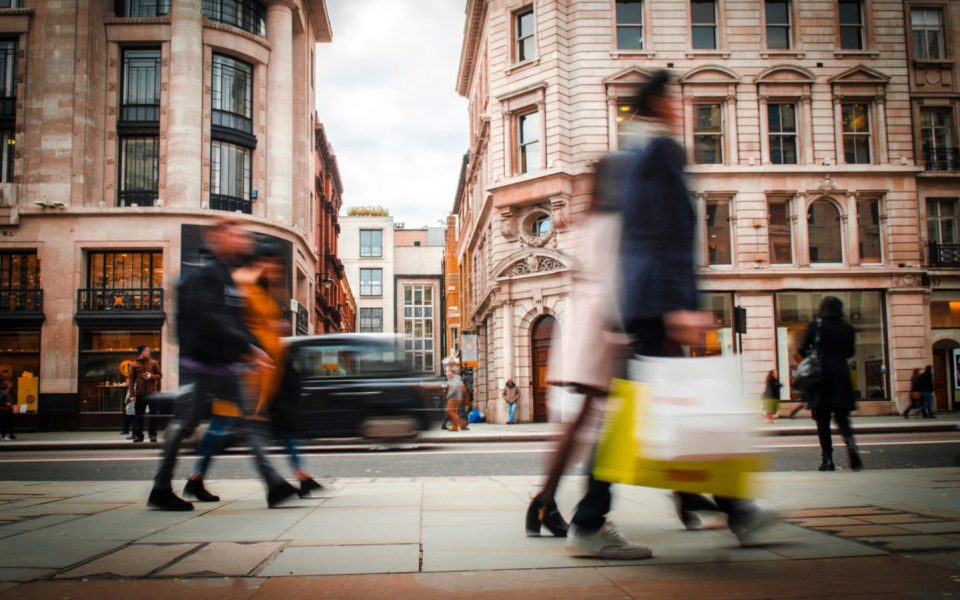
As we near the new year, take a look back at recent retail trends around the world
Before we make our retail predictions for the rest of 2021 and the start of 2022, we wanted to look at the major global retail trends at play in Q3. What early 2021 trends continued their trajectory? Were there any surprising developments in consumer behavior? We did some research to answer these questions.
Here’s a recap of the retail dynamics at play in global markets.
Shopping in North America looks different — but doesn’t stop
While trying to get around supply chain and inflation issues, U.S. consumers are purchasing lower-priced items, cutting back on discretionary spending, and shopping earlier. And many took advantage of early discounts and sales before Black Friday and Cyber Monday rolled around.
Looking through the end of the year, the top three product categories with the highest expected net gain for U.S. shoppers versus the 2020 holiday season are health products (43% net more), groceries (22% net more), and clothing/footwear/fashion (18% net more).
Interestingly enough, shoppers from Mexico are crossing the border to do their shopping, and they traditionally contribute 30 to 40% of overall retail sales in the Brownsville and San Antonio, Texas areas. That’s not to say that retail within Mexico’s borders isn’t thriving; Mexico’s same-store retail sales rose 11.6% in October compared to the same month last year.
COVID-19 continues to drive shoppers online in Australia/New Zealand and Europe
Australia was quick to go into lockdown when the COVID-19 pandemic started. Over the past two years, retail has taken a hit and ecommerce has picked up speed, consistent with what we see in most other regions. Forty-three percent of Australians in one survey said they had reduced spending due to the pandemic, and 32% said they had shifted to online shopping.
When shopping in-store, Australian consumers have become more intentional and are planning their store visits further in advance. Also, with Australia facing additional hardships such as bushfires, many consumers started to focus on shopping locally to support Australia’s economic recovery.
Similar to Australia and New Zealand, strict measures were put in place in the United Kingdom and Europe to slow the spread of COVID-19. Lockdowns led to the closure of physical stores, and online shopping increased across Europe. Most restrictions were lifted earlier in the year, but as we continue further into the holiday season, there has been a recent surge in COVID-19 cases in parts of Europe, and with that, consumers are doing a lot of shopping online.
Approximately 311.4 million consumers are currently active on the ecommerce market. Of those online shoppers, over 41 million were from the UK. Seventeen percent of British respondents in a YouGov survey said they shop exclusively online.
The largest monthly decrease in retail shopping across Europe was in Germany, where retail trade decreased by 0.3% in September compared to August.
eCommerce and inflation tell the story in Latin America
2020 was a record-setting year for ecommerce adoption across Latin America. Online retail sales soared by 63.3% in 2020 to USD 104.6 billion, according to eMarketer.
This year, Latin America will continue to hold its number-one spot as the world’s fastest-growing regional retail ecommerce market, at 25.6%. Brazil, Argentina, and Mexico maintain spots in the top five fastest-growing retail ecommerce markets. Over the past year, Colombian retailers have also seen a rise in adoption of digital wallets for ecommerce and touchless retail interactions. Around 1.6 million Colombians activated digital wallets for the first time last year.
But inflation is as much a part of the story as ecommerce. In Brazil, inflation soared more than 10% in the twelve months through October, leading to a decline in retail sales. For example, three of Brazil’s most popular retailers were cut down in size during the first two weeks of November, with a drop of 25 billion reais ($4.58 billion) off their collective market value.
Stores in Argentina have started to freeze prices on products, most notably food items, to combat inflation. Yet there has been a recovery in one segment of Argentina’s retail industry: fashion. Retail sales of clothing, lingerie, and accessories grew 38.5% year-on-year in August, according to data from the Argentine Chamber of Medium Enterprises (CAME).
Retail in the new year
As we gear up for 2022, consumers and retailers are still facing supply chain crises, labor shortage issues, and inflation while still dealing with other effects of the pandemic. Though 2021 has been a year of hardships, there’s a shared sense of optimism heading into the new year.



